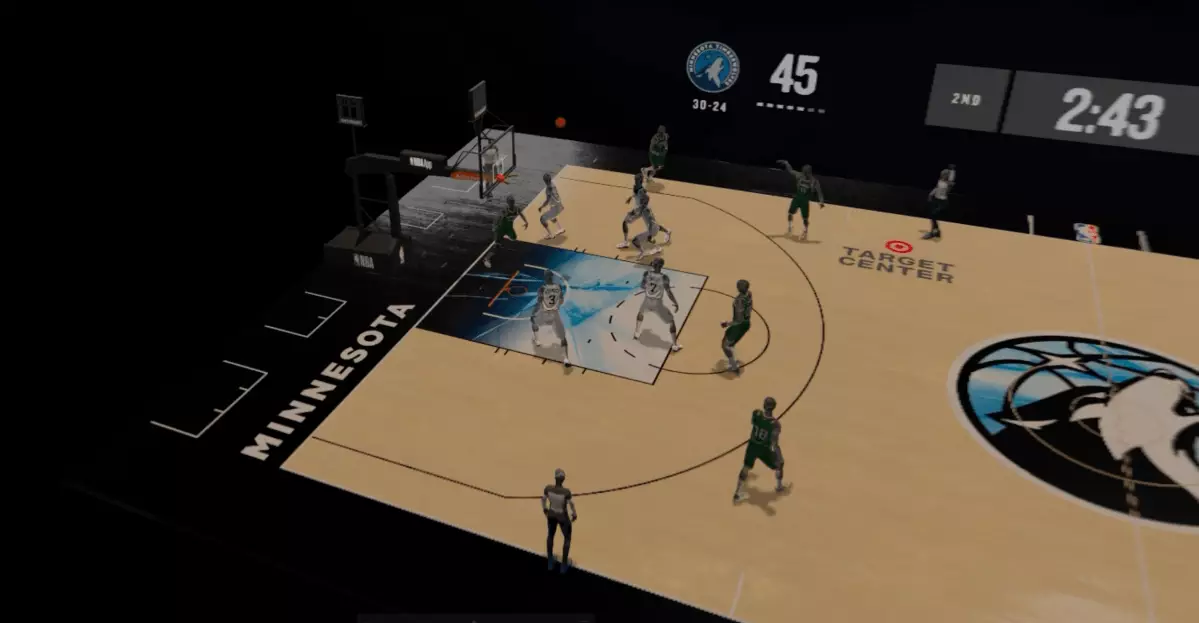The fusion of technology and sports has created endless possibilities for enhancing fan engagement. One of the latest innovations in this intersection is the NBA’s introduction of an augmented reality (AR) feature named “Tabletop,” available exclusively to NBA League Pass subscribers. This move not only aligns with the growing trend of immersive experiences in sports but also showcases the NBA’s commitment to leveraging technology to enrich the viewing experience.
The Tabletop feature essentially transforms your living space into a virtual basketball arena. Utilizing Apple’s Vision Pro technology, it allows users to project a 3D basketball court into their environment during select live games. This innovation is not merely a gimmick; it aims to bring fans closer to the action while providing a unique viewing perspective. Digital avatars represent real players, mimicking their movements on the court as they engage in gameplay. Each avatar can be distinguished by jersey colors and player identifiers, ensuring that fans remain connected to their favorite athletes even in this digital format.
Furthermore, Tabletop elevates the gamer experience by syncing digital interactions with live announcements, though initial tests revealed a delay in audio synchronization. With user feedback suggesting improvements to align audio and visual elements, the NBA seems poised to refine Tabletop further. Observations indicated substantial responsiveness when users toggled synchronization options, showcasing the potential for future adjustments and enhancements.
The Benefits of Augmented Reality in Sports
The incorporation of augmented reality into sports viewership has significant implications for how fans interact with their favorite leagues. Traditional viewing experiences often create a barrier between the game and the fan, yet AR features like Tabletop look to dissolve that divide. This innovation not only transforms passive viewers into active participants but also raises awareness about the possibilities that lie within the evolving sports ecosystem.
By providing a floating basketball court that fans can interact with, the NBA caters to a generation of tech-savvy viewers who demand more from their viewing experiences. The appeal lies in the ability to immerse oneself in the game while still being physically located at home. As sports and technology continue to intertwine, features like Tabletop may lead the charge toward a future where fans feel more engaged, regardless of their physical location.
Given the initial success and positive reception of the Tabletop feature, it remains crucial to examine its sustainability and future development. Unlike some similar applications that have faltered—such as the short-lived Lapz Vision Pro for Formula 1—NBA’s commitment to continuous refinement and integration could set it apart in an increasingly competitive tech landscape.
While the NBA did not confirm if Tabletop would be available for marquee events such as the NBA All-Star Game, the potential for its expansion seems vast. Future updates could include features such as viewer interactivity, enhanced analytics, and deeper personalization related to fans’ favorite teams or players.
Moreover, there’s the potential to incorporate social features that would allow friends to watch games together in virtual spaces. The merger of social interaction and sports viewing through cutting-edge technology opens doors to create community-oriented experiences despite physical distance.
Final Thoughts
The NBA’s innovative leap into augmented reality with the Tabletop feature highlights a pivotal moment in sports entertainment. By not only pushing the boundaries of what’s traditionally considered a viewing experience but also engaging fans on a more interactive level, the league demonstrates its agility in adapting to and anticipating consumer demands. As the sports industry navigates this new terrain, all eyes will be on the NBA to determine how successfully it can maintain this momentum while captivating a new generation of fans in the technologically-driven market.

